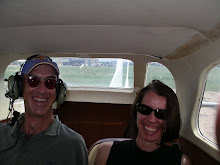

From Google, I searched for “international school libraries” (without the quotation marks). Even though my interest area is in the relationship of the school library to instruction, my aim is to work in an international school library. In an international school, the library should play a central role in teaching and learning, functioning as a “window” to the world for a school, an English-medium environment in a non-English-speaking country. Additionally, most of my teaching experience has been in international schools. They are usually vibrant places serving students of a number of different nationalities. The library I envision would be a central point for all members of the school community, including students, teachers, administrators and parents.
After searching Google and (oops!) misspelling the word “international” in my search term, the first hit I received was for the International Association of School Librarianship (IASL). (The results of this "fuzzy search" from Google are above. The "Did you mean...?" feature is very handy in retrieval.) Besides the word “international” in its title, IASL's mission statement was striking. Here it is in its entirety:
The Mission of IASL:
The mission of the International Association of School Librarianship (IASL) is to provide an international forum for those people interested in promoting effective school library media programs as viable instruments in the educational process. IASL also provides guidance and advice for the development of school library programs and the school library profession. IASL works in cooperation with other professional associations and agencies.
Membership is worldwide, and includes school librarians, teachers, librarians, library advisers, consultants, educational administrators, and others who are responsible for library and information services in schools. The membership also includes professors and instructors in universities and colleges where there are programmes for school librarians, and students who are undertaking such programmes.
IASL publishes School Libraries Worldwide, a refereed journal published twice a year. A quick look through its titles showed issues devoted to improving the role of the library in teaching and learning. While the publication may not deal solely with international school libraries, the librarian teaching and living outside of the U.S. would be able to read about libraries around the world and the challenges faced in different areas. The wide range of articles about international contexts does not rule out readership by librarians based in the U.S. Instead, the publication accepts articles about school libraries everywhere.
IASL also has an Advocacy page containing links to International Federation of Library Associations and Institutions (IFLA), International School Library Day, a host of resources for the school librarian, School Librarians Make a Difference (with different research on school libraries and their role in learning), and, finally, the UNICEF Rights of the Child. By following these links, the international school librarian—or, really, any school librarian—would receive ample information on topics pertinent to working with students and becoming a more active, informed instructional partner.
For a librarian already a member of the American Library Association and perhaps already a subscriber to the School Library Journal, joining IASL would be a perfect way to become more “international.”


















